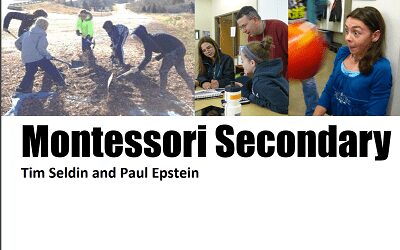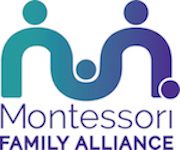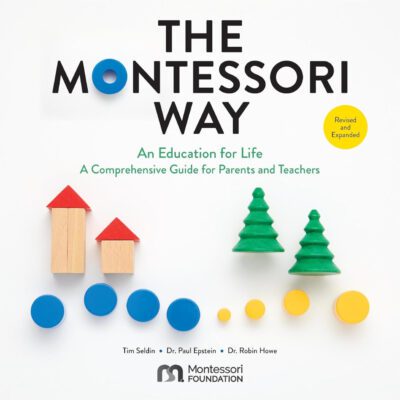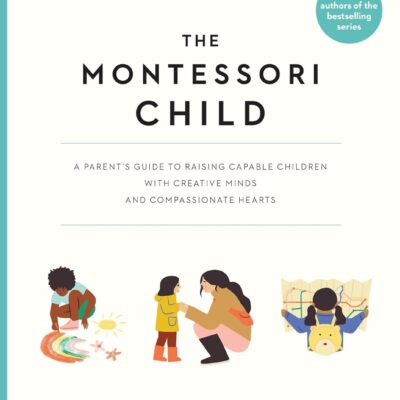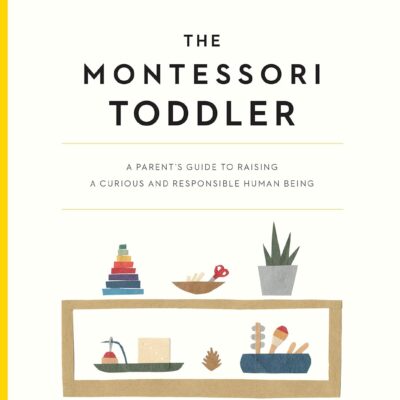Leading Your School the Montessori Way: Flip Your Organizational Chart!
Would you like to lead your school in a way that’s more consistent with Montessori values?
If you would, I have a simple suggestion that can help you move in that direction:
Flip your organizational chart!
Doing this will give you a different perspective on your role as a school leader and your relationship with others at your school. It will also encourage you to think about how you might change some or all of your operating procedures – personally and organizationally – to match this new perspective.
To give you a sense of what flipping your organizational chart would mean and why it’s more consistent with Montessori values, I thought it might be most helpful to share images of two different organizational charts – a traditional version and a “flipped” version – together with a brief discussion of the values and assumptions implicit in each.
Traditional Organizational Chart
The traditional organizational chart in Figure 1 reflects a nonprofit school with a Board of Trustees. If you are the Head of an owner-operated school, you could put yourself where the Board and the Head of School are – perhaps with a parent-teacher organization (PTO) off to the side in an advisory and fundraising role.
From a Montessori perspective, the most important thing to notice here is how much this organizational chart resembles the structure of a traditional classroom. The teacher – or in this case the Head of School – is the “sage on the stage,” dispensing wisdom from the front of the class – or the top of the hierarchy. And the students – or staff – are “below” them and are expected to listen and follow directions.
These traditional models – for schools or classrooms – are based on early 20th-century – or older – ideas about the importance of hierarchy and the efficiency of top-down, command-driven organizations.
The whole point of these models is that only certain people are supposed to have ideas and authority. Everyone else is just part of the chain.
As a result, the most important leaders – the Board (or owner) and the Head of School – are at the top of the chart.
Everyone else is below and is expected to follow orders from above – though they may have limited autonomy in their own spheres.
Most striking, from a Montessori perspective, the students are near the bottom of the traditional chart – below the Board, the Head of School and other administrators, and the teachers – suggesting that their role is essentially passive and that they are supposed to follow the directions of everyone “above” them.
In this chart too, parents are at the bottom – even below students – reflecting what I’m afraid is a not-uncommon attitude among many Montessorians that parents are the least important people at a school (except for paying bills) and that they should be kept out of school business as much as possible.
In my view, this traditional top-down approach is fundamentally at odds with at least two key Montessori principles:
• The idea that everyone – children and adults – should be respected for who they are and what they bring to the community – whether that community is a classroom or a school. Individuals have different gifts and different strengths, but no one should ever be “subordinate” to anyone else.
•The idea that everyone – children and adults – should be free to pursue their own learning and growth, within the limits of a supportive “prepared environment.”
The traditional top-down model is also inconsistent with more recent ideas about how decentralized, non-hierarchical approaches can foster creativity and innovation at all levels in an organization. Due to lack of space, I won’t discuss this further here. But I hope to say more about it in a future article.


“FLIPPED” ORGANIZATIONAL CHART
The “flipped” organizational chart in Figure 2 also reflects a nonprofit school with a Board and a Head of School. But as you can see, the traditional structure has been inverted.
Instead of the Board and the Head of School being at the top of the chart, they are at the bottom – suggesting that their role is to support the school’s staff and students, not dictate to them.
And instead of the students being near the bottom of the chart, they are at the top – suggesting that their learning and growth are paramount and that the school’s main goal is to help and support them.
In addition, instead of parents being represented by a box at the very bottom of the chart, they are now represented by the blue oval that surrounds the chart, reflecting the fact that they interact with everyone at the school in one way or another and that they – and the broader community beyond them – are literally the environment in which the school operates.


This “flipped” structure makes the entire school much more like a Montessori classroom.
In this model, the Head of School functions more like a Montessori teacher – a “guide on the side”, whose primary responsibility is to make the whole school a supportive “prepared environment” in which students, staff, and parents can learn and grow.
This inverted structure also suggests some fundamental changes in how the Head of School – and, in fact, the whole school – should operate. Instead of being command-driven and emphasizing the importance of “following orders,” for example, this model invites mutual respect, dialogue, and collaboration, and it prioritizes learning and growth for everyone at the school.
Finally, thinking about schools in this way also means that we need to consider alternative ways to train Montessori school leaders. Instead of asking school leaders to follow traditional business or nonprofit models, we need to encourage them to think creatively about how they and their schools can adapt new, non-hierarchical approaches based on respect and collaboration.
One possible approach that might guide our thinking here, for example, is Positive Discipline, which many Montessori schools already use in their classrooms (https://www.positivediscipline. com).
Another possible model is Appreciative Inquiry, a collaborative, strength-based approach to planning and leadership that has been used effectively by many businesses, nonprofit organizations, and schools (https://appreciativeinquiry.champlain.edu/learn/ appreciative-inquiry-introduction/).
A third approach would be to adapt elements of “shared leadership” or “shared power,” as advocated by groups like Compassionate Atlanta and outlined in “The Power of Shared Power: Co-Directing Nonprofits Through Compassion,” which appeared recently in the online nonprofit magazine Blue Avocado (https://blueavocado.org/leadership-and-management/the-power-of-shared-power-co-directing-nonprofits-through-compassion/).
Flipping your organizational chart and adopting a leadership approach like one of these would take work, but it would also have a number of clear benefits, including the following:
• It would make your whole school a consistent expression of Montessori values.
• It would indicate clearly that your students are the most important people at your school, helping you and everyone else keep them at the center of all your discussions and decisions.
•It would increase engagement and commitment by your staff and parents.
• It would foster the kind of open, respectful environment that supports efforts toward diversity, equity, and inclusion.
Again, I won’t say more about any of this here due to lack of space, but I hope to explore these issues more fully in future articles.
I will also be offering a six-session course on Appreciative Inquiry and Appreciative Leadership for Montessori school leaders through the IMC in March-April 2022.
So, if you’re curious to learn more, stay tuned to Montessori Leadership and check out my class when information about it appears on the IMC website!


